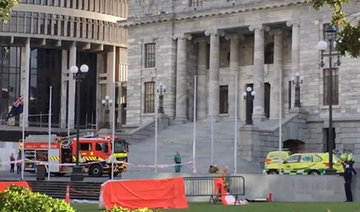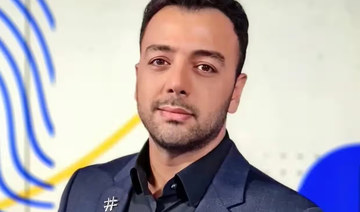Washington — USA
Washington, April 1, 2021 Agence France Presse: Even as US newspapers sink toward an abyss, an unusual bidding war has broken out for a major chain, pitting hedge fund operators against civic-minded billionaires seeking to promote a nonprofit model for the struggling industry.
Tribune Publishing, which owns the Chicago Tribune, Baltimore Sun and other big regional dailies, was set to sell the company to Alden Global Capital at a value of $630 million, a move that would expand the news operations of the hedge fund with a reputation for aggressive cutting of newsroom staff.
Maryland businessman Stewart Bainum had another idea: he initially struck a deal to buy the Baltimore Sun as part of the transaction, but when that plan hit a snag, made a $650 million offer for the entire chain.
Bainum, chairman of Choice Hotels, has pledged to put up $100 million, a sum match by two other wealthy investors. But it remained unclear if he can raise enough in time to head off the Tribune deal with Alden.
“Alden is offering a clean bid; they have cash and are waving it in front of the shareholders,” said Dan Kennedy, a Northeastern University journalism professor.
“It becomes complicated to ask shareholders to wait until (Bainum) can get his financing together.”
Joining Bainum’s effort was Swiss billionaire Hansjoerg Wyss, who told the New York Times he would invest $100 million; and Mason Slaine, a minority Tribune stakeholder and former CEO of Thomson Financial.
Slaine told the Wall Street Journal he would commit the same amount to acquire the Orlando Sentinel and Sun-Sentinel in his state of Florida.
Amid efforts to find buyers for other Tribune dailies, a “mystery” investor has emerged for the Morning Call offering $30 million to $40 million for the newspaper, according to the Allentown, Pennsylvania daily.
If Bainum succeeds, he would likely sell off some of the newspapers — which include the Hartford Courant and Virginian-Pilot — with some potentially becoming nonprofits.
The outcome for the Tribune could be a turning point for the troubled sector, either toward a model with civic support for expanded local news coverage, or a pure economic-driven model that could lead to deeper newsroom cuts.
Newsroom employment at US newspapers fell by half between 2008 and 2019, according to Pew Research Center, with more cuts reported during the pandemic.
“Alden’s strategy has been to cut deep and extract as much value as they can from newspapers,” Kennedy said.
“Those of us who care about the future of regional newspapers hope that the Bainum group can pull it together.”
Jon Schleuss, president of the NewsGuild which represents journalists at several Tribune newspapers, has also been pressing for civic support and local ownership in the hope of averting further job cuts.
“Our hope and work is that Alden doesn’t win,” Schleuss said. “Bainum represent a better alternative.”
Complicating matters is that Alden already owns a 31.6 percent stake in Tribune, giving it leverage over any transaction. Another 24 percent is owned by Patrick Soon-Shiong, a biotech billionaire who bought the Los Angeles Times from Tribune Publishing in 2018.
Gabriel Kahn, a former newspaper reporter now on the faculty at the University of Southern California, said the bidding comes at a time when the value of newspapers in the US has plunged.
“When you have only two bidders, it is difficult to gauge what the true value of these papers might be. But these assets have never been cheaper,” Kahn said.
But Kahn said even so-called benevolent owners may be frustrated by a dismal news media landscape where it is difficult to get digital subscriptions or advertising revenues.
Since Soon-Shiong has taken over the Los Angeles daily, “no clear strategy has emerged, nor any clear leadership. It seems obvious that managing this was much thornier than he had anticipated,” Kahn said.
“That makes me think that he is done playing civic-minded hero and will take the highest bidder for his Tribune stake.”
The nonprofit model has been growing in recent years in the United States, and now includes some 300 news outlets.
The movement gained momentum in Philadelphia, where the Inquirer newspaper has been under nonprofit ownership since 2016.
Bainum’s plan for a nonprofit in Baltimore could build on that momentum. But now, Bainum and his allies are likely to either come away with the full Tribune group or nothing.
“These buyers are united by a common interest in the long-term future of local journalism and an antipathy for newspaper investors with a track record of gutting newsrooms for near-term profit,” said Jim Friedlich, chief executive of the Philadelphia institute.
“There is a growing recognition not only that these local news institutions are vital to our democracy, but that they face extinction in the hands of the wrong owners.”
As US newspapers slide toward abyss, a bidding war breaks out
As US newspapers slide toward abyss, a bidding war breaks out

Live video of man who set himself on fire outside court proves challenging for news organizations
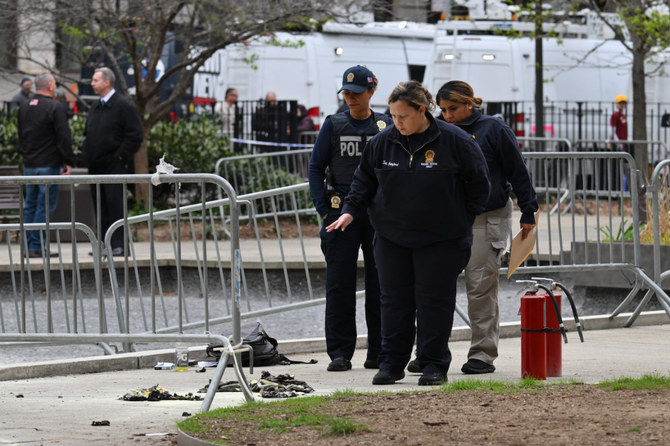
- The man, who distributed pamphlets before dousing himself in an accelerant and setting himself on fire, was in critical condition
- The incident tested how quickly the networks could react, and how they decided what would be too disturbing for their viewers to see
NEW YORK: Video cameras stationed outside the Manhattan courthouse where former President Donald Trump is on trial caught the gruesome scene Friday of a man who lit himself on fire and the aftermath as authorities tried to rescue him.
CNN, Fox News Channel and MSNBC were all on the air with reporters talking about the seating of a jury when the incident happened and other news agencies, including The Associated Press, were livestreaming from outside the courthouse. The man, who distributed pamphlets before dousing himself in an accelerant and setting himself on fire, was in critical condition.
The incident tested how quickly the networks could react, and how they decided what would be too disturbing for their viewers to see.
With narration from Laura Coates, CNN had the most extensive view of the scene. Coates, who at first incorrectly said it was a shooting situation, then narrated as the man was visible onscreen, enveloped in flames.
“You can smell burning flesh,” Coates, an anchor and CNN’s chief legal analyst, said as she stood at the scene with reporter Evan Perez.
The camera switched back and forth between Coates and what was happening in the park. Five minutes after the incident started, CNN posted the onscreen message “Warning: Graphic Content.”
Coates later said she couldn’t “overstate the emotional response of watching a human being engulfed in flames and to watch his body be lifted into a gurney.” She described it as an “emotional and unbelievably disturbing moment here.”
Fox’s cameras caught the scene briefly as reporter Eric Shawn talked, then the network switched to a courtroom sketch of Trump on trial.
“We deeply apologize for what has happened,” Shawn said.
On MSNBC, reporter Yasmin Vossoughian narrated the scene. The network showed smoke in the park, but no picture where the body was visible.
“I could see the outline of his body inside the flames,” Vossoughian said, “which was so terrifying to see. As he went to the ground his knees hit the ground first.”
The AP had a camera with an unnarrated live shot stationed outside the courthouse, shown on YouTube and APNews.com. The cameras caught an extensive view, with the man lighting himself afire and later writhing on the ground before a police officer tried to douse the flames with a jacket.
The AP later removed its live feed from its YouTube channel and replaced it with a new one because of the graphic nature of the content.
The news agency distributed carefully edited clips to its video clients — not showing the moment the man lit himself on fire, for example, said executive producer Tom Williams.
Russian war correspondent for Izvestia killed in Ukraine

- Izvestia said Semyon Eremin, 42, died of wounds from a drone attack in Zaporizhzhia region
- Eremin had reported for the Russian daily from hottest battles in Ukraine during the 25-month-old war
Semyon Eremin, a war correspondent for the Russian daily Izvestia, was killed on Friday in a drone attack in southeastern Ukraine, the daily said.
Izvestia said Eremin, 42, died of wounds suffered when a drone made a second pass over the area where he was reporting in Zaporizhzhia region.
Izvestia said Eremin had sent reports from many of the hottest battles in Ukraine’s eastern regions during the 25-month-old war, including Mariupol, besieged by Russian troops for nearly three months in 2022.
He had also reported from Maryinka and Vuhledar, towns at the center of many months of heavy fighting.
WhatsApp being used to target Palestinians through Israel’s Lavender AI system
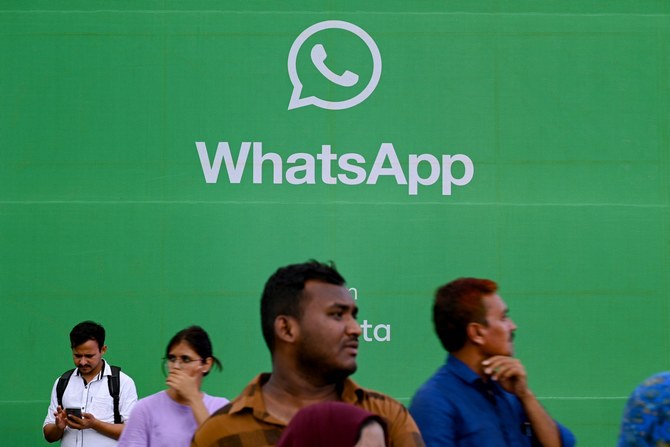
- Targets’ selection based on membership to some WhatsApp groups, new report reveals
- Accusation raises questions about app’s privacy and encryption claims
LONDON: WhatsApp is allegedly being used to target Palestinians through Israel’s contentious artificial intelligence system, Lavender, which has been linked to the deaths of Palestinian civilians in Gaza, recent reports have revealed.
Earlier this month, Israeli-Palestinian publication +972 Magazine and Hebrew-language outlet Local Call published a report by journalist Yuval Abraham, exposing the Israeli army’s use of an AI system capable of identifying targets associated with Hamas or Palestinian Islamic Jihad.
This revelation, corroborated by six Israeli intelligence officers involved in the project, has sparked international outrage, as it suggested Lavender has been used by the military to target and eliminate suspected militants, often resulting in civilian casualties.
In a recent blog post, software engineer and activist Paul Biggar highlighted Lavender’s reliance on WhatsApp.
He pointed out how membership in a WhatsApp group containing a suspected militant can influence Lavender’s identification process, highlighting the pivotal role messaging platforms play in supporting AI targeting systems like Lavender.
“A little-discussed detail in the Lavender AI article is that Israel is killing people based on being in the same WhatsApp group as a suspected militant,” Bigger wrote. “There’s a lot wrong with this.”
He explained that users often find themselves in groups with strangers or acquaintances.
A lot of difficult questions for Meta before that trust can be rebuilt, and I don't honestly believe that Meta can or will answer them pic.twitter.com/vaeLbg9hx3
— Paul Biggar (@paulbiggar) April 16, 2024
Biggar also suggested that WhatsApp’s parent company, Meta, may be complicit, whether knowingly or unknowingly, in these operations.
He accused Meta of potentially violating international humanitarian law and its own commitments to human rights, raising questions about the privacy and encryption claims of WhatsApp’s messaging service.
The revelation is just the latest of Meta’s perceived attempts to silence pro-Palestinian voices.
Since before the beginning of the conflict, the Menlo Park giant has faced accusations of double standards favoring Israel.
In February, the Guardian revealed that Meta was considering the expansion of its hate speech policy to the term “Zionist.”
More recently, Meta quietly introduced a new feature on Instagram that automatically limits users’ exposure to what it deems “political” content, a decision criticized by experts as a means of systematically censoring pro-Palestinian content.
Responding to requests for comment, a WhatsApp spokesperson said that the company could not verify the accuracy of the report but assured that “WhatsApp has no backdoors and does not provide bulk information to any government.”
Eastern European mercenaries suspected of attacking Iranian journalist Pouria Zeraati
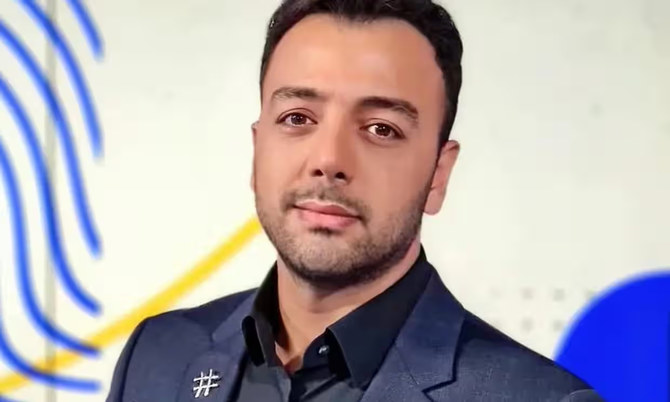
- UK security services believe criminal proxies with links to Tehran carried out London knife attack
LONDON: Police said on Friday that a group of Eastern European mercenaries is suspected to have carried out the knife attack on Iranian journalist Pouria Zeraati in late March.
Zeraati was stabbed repeatedly by three men in an attack outside his south London home.
The Iran International presenter lost a significant amount of blood and was hospitalized for several days. He has since returned to work, but is now living in a secure location.
Iran International and its staff have faced repeated threats, believed to be linked to the Iranian regime, which designated the broadcaster as a terrorist organization for its coverage of the 2022 protests.
Iran’s charge d’affaires, Seyed Mehdi Hosseini Matin, denied any government involvement in the attack on Zeraati.
Investigators revealed that the suspects fled the UK immediately after the incident, with reports suggesting they traveled to Heathrow Airport before boarding commercial flights to different destinations.
Police are pursuing leads in Albania as part of their investigation.
Counterterrorism units and Britain’s security services leading the inquiry believe that the attack is another instance of the Iranian regime employing criminal proxies to target its critics on foreign soil.
This method allows Tehran to maintain plausible deniability and avoids raising suspicions when suspects enter the country.
Zeraati was attacked on March 29 as he left his home home to travel to work. His weekly show serves as a source of impartial and uncensored news for many Iranians at home and abroad.
In an interview with BBC Radio 4’s “Today” program this week, Zeraati said that while he is physically “much better,” mental recovery from the assault “will take time.”
Court orders release of prominent Palestinian professor suspected of incitement

- Nadera Shalhoub-Kevorkian was under investigation after questioning Hamas atrocities, criticizing Israel
- Insufficient justification for arrest, says court
- Detention part of a broader campaign, says lawyer
LONDON: The prominent Hebrew University of Jerusalem professor, Nadera Shalhoub-Kevorkian, was released on Friday after a court order rejected police findings.
The criminologist and law professor was arrested the previous day on suspicion of incitement. She had been under investigation for remarks regarding the Oct. 7 attacks by Hamas and for saying Israelis were committing “genocidal crimes” in the Gaza Strip and should fear the consequences.
On Friday, the court dismissed a police request to extend her remand, citing insufficient justification for the arrest, according to Hebrew media reports.
Protesters gathered outside the courthouse to demonstrate against Shalhoub-Kevorkian’s arrest.
Israeli Channel 12, which first reported the news, did not specify where Shalhoub was arrested but her lawyer later confirmed she was apprehended at her home in the Armenian Quarter of Jerusalem.
“She’s not been in good health recently and was arrested in her home,” Alaa Mahajna said. “Police searched the house and seized her computer and cellphone, [Palestinian] poetry books and work-related papers.”
Mahajna described Shalhoub-Kevorkian’s arrest as part of a broader campaign against her, which has included numerous threats to her life and of violence.
The professor was suspended by her university last month after calling for the abolition of Zionism and suggesting that accounts of sexual assault during the Hamas-led attacks on Israel were fabricated.
The suspension was initially criticized by the university community as a blow to academic freedom in Israel. However, the decision was later reversed following an apology from Shalhoub-Kevorkian and an admission that sexual assaults took place.
Since hostilities began last year, numerous dissenting voices in Israel have faced arrest for expressing solidarity with victims of the bombardment in Gaza.
In October, well-known ultra-Orthodox Israeli journalist Israel Frey was forced into hiding following a violent attack on his home.
Bayan Khateeb, a student at the Technion-Israel Institute of Technology, was arrested last year for incitement after posting an Instagram story showing the preparation of a popular spicy egg dish with the caption: “We will soon be eating the victory shakshuka.”





